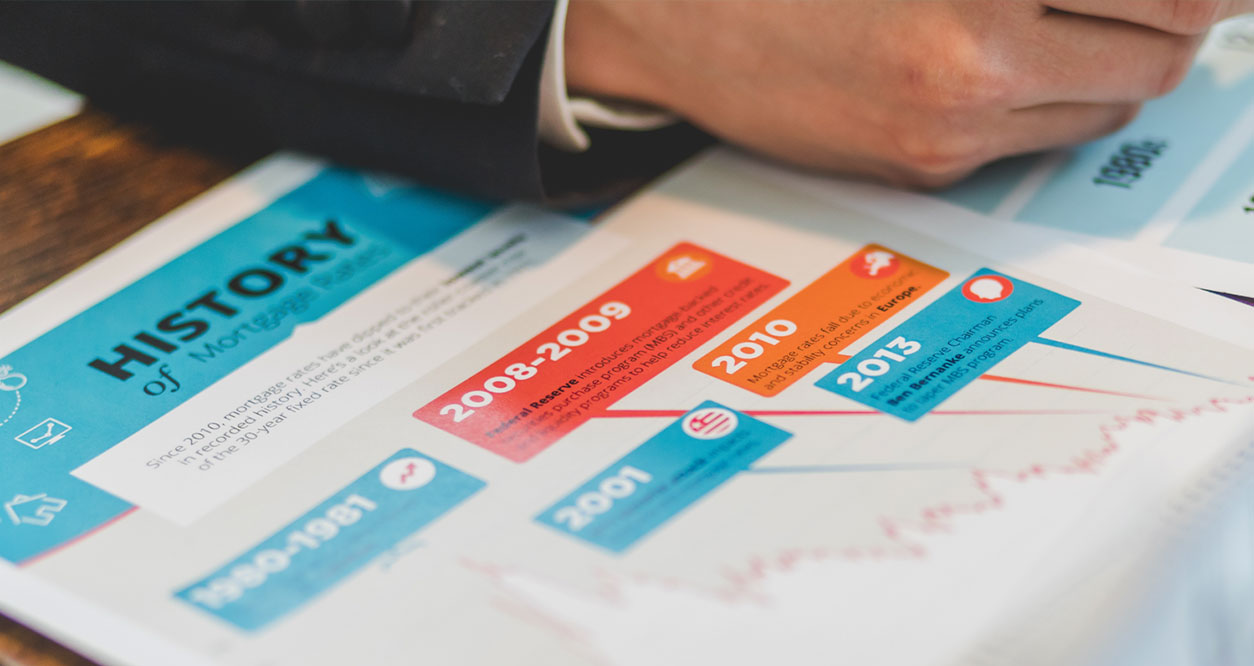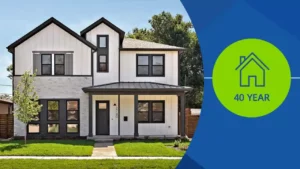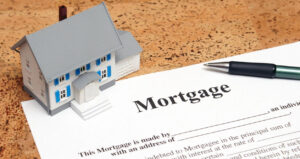Mortgagerateslocal.com – In 1981, mortgage rates experienced significant fluctuations and reached unprecedented highs, leaving a lasting impact on the housing market and the economy as a whole. This period stood out as one of the most volatile times in the history of mortgage lending, with interest rates skyrocketing and homeowners facing immense financial challenges.
To fully understand the significance of 1981 mortgage rates, it is essential to delve into the factors that contributed to this tumultuous period. One of the primary reasons for the surge in rates was the Federal Reserve’s aggressive efforts to combat inflation. In response to soaring consumer prices, the Federal Reserve implemented a tight monetary policy, pushing interest rates to new heights.
During this time, mortgage rates shot up to staggering levels, with the average fixed-rate mortgage reaching over 18%. This was a stark contrast to the relatively low rates seen in the preceding years, and it had a profound impact on the housing market. Affordability became a significant concern as potential buyers found it increasingly challenging to secure financing for their dream homes.
The impact of the high mortgage rates was felt across various sectors of the economy. Home sales plummeted, as the exorbitant borrowing costs deterred potential buyers. Existing homeowners faced the dilemma of whether to refinance their mortgages or continue with their current rates. Many homeowners found themselves trapped in high-interest loans, unable to refinance due to the immense costs associated.
Furthermore, the impact of the high mortgage rates spilled over into the construction industry, hampering new home construction and slowing down the growth of the housing market. The combination of soaring interest rates and declining demand resulted in a stagnation of the real estate sector, causing ripple effects throughout the broader economy.
1981 Mortgage Rates
In 1981, mortgage rates experienced significant fluctuations due to various economic factors. The average 30-year fixed mortgage rate in January 1981 was 18.45%. However, as the year progressed, rates started to increase further. By September 1981, the average rate reached a record high of 18.87%. These high rates were primarily a result of the Federal Reserve’s efforts to combat inflation during that period.
The rates in 1981 had a substantial impact on the housing market. The high borrowing costs made it more challenging for prospective homebuyers to afford mortgages, leading to a slowdown in the real estate industry. Many individuals opted to delay their home purchases or choose adjustable-rate mortgages (ARMs) that initially offered lower rates but came with the risk of future rate adjustments.
When it comes to searching for 1981 mortgage rates, it can be quite challenging to find specific and reliable data. The lack of available information could be attributed to several factors, such as limited access to historical mortgage rate data or too narrow search criteria. However, there are ways to optimize your search and obtain accurate insights into the mortgage rates prevalent during that period.
Firstly, it is essential to double-check the spelling and keywords used in your search. Minor errors in your search terms may hinder the retrieval of relevant information. Make sure you include “1981 mortgage rates” as a key phrase in your search query to improve the chances of finding the required data.
Expanding the search criteria to include a wider range of years could also prove beneficial. While pinpointing the rates for a specific year might be challenging, examining mortgage rate trends over a certain period can provide valuable insights. Consider broadening your search to cover a reasonable range of years surrounding 1981. This approach allows you to gauge the mortgage rate landscape during that time.
Consulting with mortgage lenders or financial advisors is another recommended step. Professionals in the industry possess a wealth of knowledge and access to up-to-date information on mortgage rates. Reach out to them and inquire about historical mortgage rate data or ask for expert opinions on prevailing rates during 1981. Their expertise can significantly enhance the accuracy and reliability of the information you acquire.
It is important to note that various economic factors influence mortgage rates and constantly fluctuate. While finding specific rates from 1981 might be challenging, focusing on current rates and market trends should be a priority. Keep yourself updated with the latest mortgage rates, as historical data alone may not accurately reflect the current lending landscape.
Effects on the Economy
The high mortgage rates of 1981 had broader implications for the overall economy. The increased borrowing costs reduced consumer spending power, as more income was allocated towards mortgage payments. This, in turn, contributed to a slowdown in economic growth and limited investment opportunities. Furthermore, the high rates encouraged savings as individuals sought to earn higher returns on their money through interest-bearing accounts.
However, the Federal Reserve’s aggressive actions to combat inflation eventually paid off. By the end of 1981, mortgage rates started to decline gradually. The average rate for a 30-year fixed mortgage in December 1981 was 16.63%. This downward trend continued over the following years, allowing the real estate market to recover and stimulating economic activity.
Understanding and Analyzing 1981 Mortgage Rates
When researching historical mortgage rates, the year 1981 holds particular significance. During this time, the United States experienced a drastic increase in mortgage interest rates, reaching record highs. Understanding and analyzing the factors behind these rates can provide valuable insights for researchers, economists, and individuals interested in the history of the housing market. Here are some tips to help you navigate the complexities of 1981 mortgage rates.
1. Historical Context
Before diving into the specifics of 1981 mortgage rates, it is crucial to understand the historical context in which they occurred. 1981 was a period characterized by high inflation rates, economic instability, and changes in monetary policy. By studying the broader economic conditions of that time, you can gain a better understanding of why mortgage rates reached unprecedented levels.
2. Interest Rate Volatility
In 1981, mortgage interest rates experienced significant volatility, with rates surpassing 18% for fixed-rate mortgages. This intense fluctuation had far-reaching consequences for the real estate market, leading to declines in home affordability and impacting homeownership rates. Analyzing the factors that contributed to this volatility, such as inflationary pressures and government policies, can provide important insights into the dynamics of interest rate movements.
3. Impact on Housing Market
The exceptionally high mortgage rates in 1981 had a profound impact on the housing market. Homebuyers faced increased borrowing costs, which made homeownership less affordable for many individuals. Understanding the ripple effects of these high rates on housing prices, demand, and homeownership rates can shed light on the long-term consequences of interest rate fluctuations on the real estate sector.
4. Economic Policy Responses
In response to the soaring mortgage rates, governmental authorities and central banks implemented various policies to mitigate the adverse economic effects. Studying the policy responses during this period, such as changes in monetary policy or interventions in the mortgage market, can provide insights into how policymakers attempted to stabilize the housing market and maintain economic stability during a challenging period.
5. Lessons for Today
The study of 1981 mortgage rates offers valuable lessons for the present-day real estate market. By examining the causes and consequences of the high rates, analysts can identify patterns and potential indicators of future interest rate movements. This historical perspective can assist homebuyers, economists, and policymakers make informed decisions based on a deeper understanding of the complex interplay between economic factors and mortgage rates.
FAQ
The average mortgage rate in the United States reached a historical high of around 15.5%. This was due to various factors, including high inflation and the Federal Reserve’s efforts to combat it.
Mortgage rates were exceptionally high in 1981, mainly because of the rampant inflation occurring at the time. The Federal Reserve increased interest rates to control inflation, which directly influenced mortgage rates.
1981 mortgage rates were significantly higher compared to the current rates. Nowadays, mortgage rates are hovering around historic lows, often ranging between 2% and 4%, depending on the market and borrower qualifications.
The high mortgage rates had a major impact on home buying. Many potential buyers were deterred from purchasing homes due to the high costs associated with borrowing. Additionally, existing homeowners faced difficulty refinancing their mortgages.
Yes, the high mortgage rates of 1981 had long-lasting effects on the real estate market. It led to a decline in housing sales and contributed to the overall economic recession of that time period.
Several factors influenced mortgage rates in 1981. The most significant factor was the high inflation rate, which prompted the Federal Reserve to raise interest rates. Additionally, global economic conditions and government policies also played a role in shaping mortgage rates.
Conclusion
In conclusion, the mortgage rates 1981 were exceptionally high, reaching record levels. These rates significantly impacted the housing market, resulting in decreased affordability for potential homebuyers. The high borrowing costs also had broader effects on the economy, leading to reduced consumer spending and slower economic growth. However, the Federal Reserve’s measures to combat inflation eventually contributed to a decline in mortgage rates, allowing for recovery in the real estate market and stimulating economic activity.




